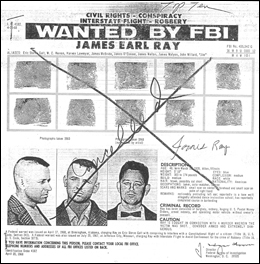The List Known ’Round the World
The year was 1949, and a reporter came to the FBI with a novel question: who were the “toughest guys” we were after? We responded with photos of 10 fugitives, which were published on the front page of The Washington Daily News. Although we didn’t know it at the time, a crime-fighting institution was born.
The “Top Ten” list immediately caught the public’s attention, and several of the fugitives were captured as a result of the media exposure. The following year—on March 14, 1950 —we formally established our Ten Most Wanted Fugitives program, relying on the support of the public to help us capture the worst of the worst.
Today, we mark the 60th anniversary of the Top Ten list, which is known around the world and has come to symbolize the FBI’s crime-fighting ability. As part of our anniversary coverage, below you can find links to a book written especially for the occasion, as well as pictures of all 494 Top Tenners.
Looking back, our list not only reflects the crime trends of the day, but also the advances in technology that allow us to publicize fugitives in ways never dreamed of when “Most Wanted” posters were found at the local post office.
Murder is the top reason people make the list. In fact, the very first Top Tenner, Thomas James Holden, was wanted for killing his wife and her two brothers. Still, each of the past six decades has had a certain criminal flavor.
When bank robber Willie Sutton was added to the list in 1950, his crime of choice was by no means out of the ordinary. When Sutton famously said he robbed banks “because that’s where the money is,” he could have been speaking for many of the Top Ten fugitives from that decade.
In the turbulent ‘60s, with a war raging in Vietnam
The 1970s turned our attention to organized crime, and a decade later, drug traffickers were in our sights. From the 1990s to the present, Top Tenners reflect the modern reality of terrorism, gang violence, and sexual predators.
Of the 494 fugitives named to the list, 463—nearly 94 percent—have been captured or located. That impressive record would not be possible without the continuing support of the public. Today, thanks to technology, we have many new vehicles for publicizing wanted fugitives. In addition to our website, we spread the word through digital billboards, social networking sites like Facebook, and software applications called widgets that can be added to websites and phones to provide up-to-the-minute information about fugitives.
It has been a remarkable 60 years for our fugitive program, but the fact is, no matter how many Top Tenners we catch, there are always other criminals waiting to replace them. For that reason, we continue to need your support. If you have any information concerning anyone on the Top Ten list, please contact your local FBI office or submit a tip online.








No comments:
Post a Comment